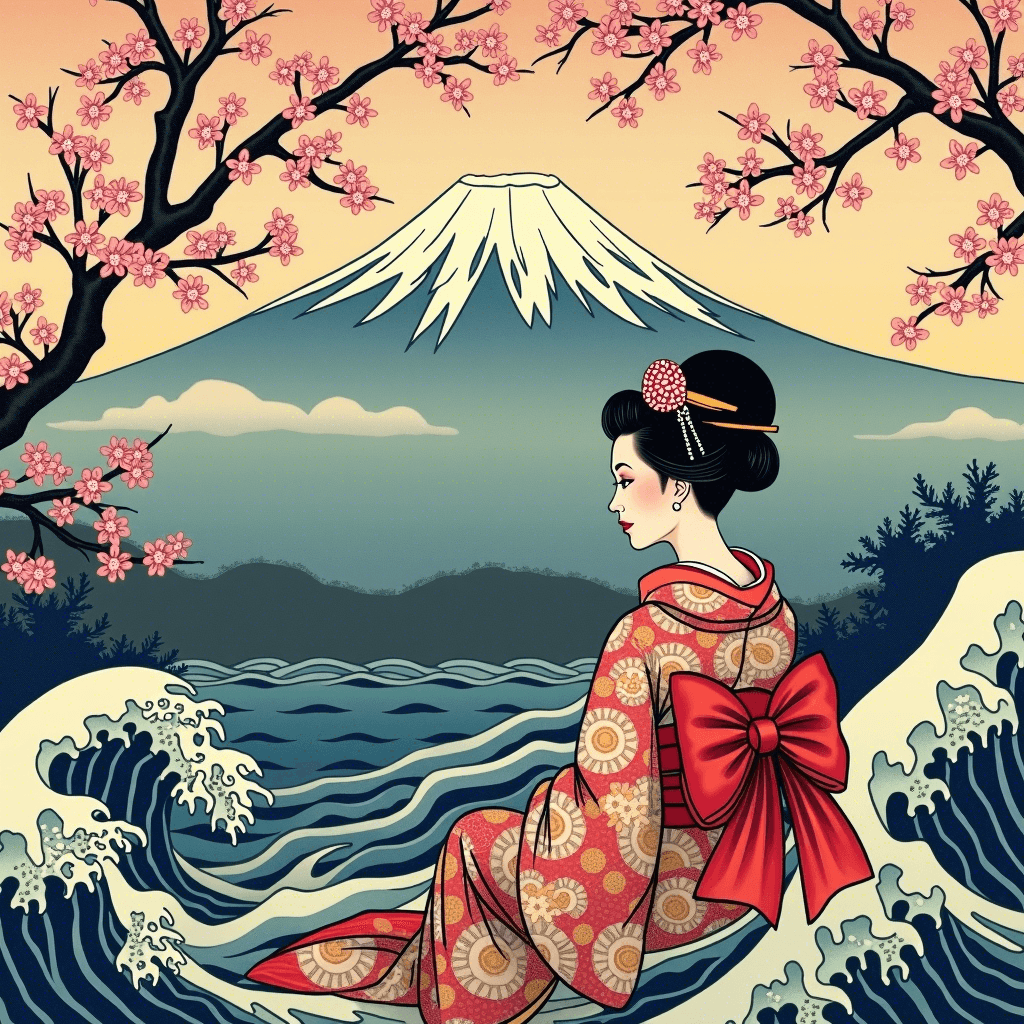
Japanese Ukiyo-e
Traditional Japanese woodblock print art from the 17th century, depicting natural beauty, geishas, and samurais with elegance and drama.
Quick Navigation
External Resources
Overview
Origin
Japan
Historical Period
Edo Period (1603–1868)
Cultural Significance
Ukiyo-e, meaning 'pictures of the floating world,' was a popular art form during Japan's Edo period, reflecting the beauty of nature, daily life, and theatrical culture.

Historical Timeline
1670s
Moronobu Hishikawa established the foundations of Ukiyo-e style in Edo
1760s
Development of full-color printing (nishiki-e) by Harunobu Suzuki
1830s
Hokusai and Hiroshige created their landmark landscape series
Techniques
Woodblock printing with multiple blocks for different colors
Sharp outlines and detailed line work
Use of natural pigments
Dynamic compositions with perspective
Cultural Context
Ukiyo-e, meaning 'pictures of the floating world,' was a popular art form during Japan's Edo period, reflecting the beauty of nature, daily life, and theatrical culture.
Did You Know?
Ukiyo-e artists often hid their signatures or symbols in their works because this art form was considered 'lowly' and not officially recognized during the Edo period.